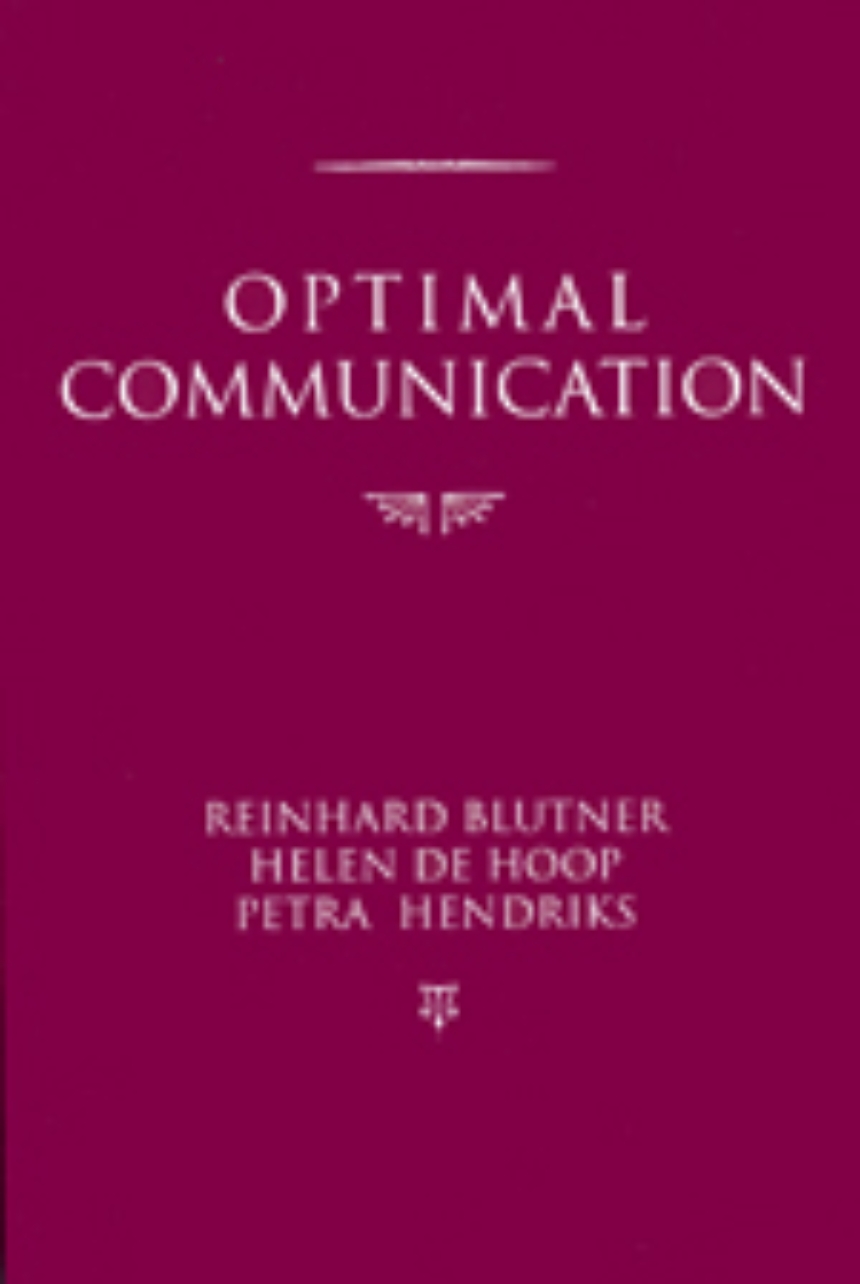Center for the Study of Language and Information
Optimal Communicaton
9781575865140
9781575865133
9781575869384
Distributed for Center for the Study of Language and Information
Optimal Communicaton
This volume explores how the effectiveness of communication is shaped by aspects of semantics and pragmatics such as compositionality, the role of the speaker and hearer, and the acquisition of meaning. Optimal Communication surveys recent research in the fields of syntax, semantics, and pragmatics, and draws from optimality theory to argue that optimal meanings result from a compromise between competing constraints. Optimal Communication will be an invaluable resource for students in cognitive science, linguistics, and natural language semantics.
Table of Contents
Acknowledgments
Preface
1. Introduction
1.1 Optimality Theory as a Theory of Knowledge
1.2 Basic Concepts of OT
1.3 Language Universals and Language Variation
1.4 A Brief History of OT
1.5 Optimization of Interpretation
1.6 Bidirectional Optimization
1.7 The Architecture of Grammar
1.8 Relation to Other Semantic Frameworks
1.9 An Overview of the Book
2. Recoverability
2.1 Introduction
2.2 Movement
2.3 Deletion
2.4 Interpreting Comparatives
3. Compositionality
3.1 Introduction
3.2 Scrambling of Definites: Productive and Interpretive Optimization
3.2.1 Optional Scrambling of Definites in Dutch
3.2.2 An OT Syntactic Analysis of Scrambling Definites
3.2.3 An OT semantic Analysis of Scrambling Definites
3.2.4 Concluding Remarks
3.3 Optimality Theoretic Semantics
3.3.1 Compositionality and the Role of Context
3.3.2 Compositionality: a Violable Constraint as well?
3.3.3 Interpretive Optimization of Nominal Anaphora
3.3.4 Interpretive Optimization of Comparatives
3.3.5 Interpretive Optimization of Temporal Anaphora
3.3.6 Adverbial Quantification
3.4 Compositionality and Bidirectionality
3.5 Scrambling Revisited: a Bidirectional OT Analysis
3.6 Summary
4. Bidirectionality
4.1 Introduction
4.2 Mental Models and Natural Language Interpretation
4.3 The Non-Monotonicity of Invited Inferences
4.4 Blocking
4.5 Conversational Implicature, Pragmatic Strengthening, and Bidirectional OT
4.6 An Example: Negative Strengthening
4.7 Summary
5. Learning
5.1 Introduction
5.2 Constraint Demotion
5.3 The Bootstrap Idea for Learning Hidden Structure
5.4 Pattern Association and Bidirectional Learning
5.5 Acquisition of Indefinite Subject and Object Interpretation in Dutch
5.6 Children’s Optimal Interpretation of Pronouns
5.7 The Gradual Learning Algorithm and bidirectional Learning
5.8 Bidirectionality, Recursion, and Evolutionary Learning
5.9 Summary
6. Foundations
6.1 Introduction
6.2 An Architecture of Cognition
6.3 Smolensky’s Tensor Product Representation
6.4 Harmonic Grammar--OT’s Predecessor
6.5 Summary
References
Index
4. Bidirectionality
5. Learning
6. Foundations
References
Index

